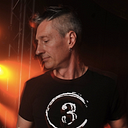Revealing Patrick’s Secret with Cinematographer Mufeng Han
A picture is worth a thousand words; how many times have you heard this phrase? While it might be true, combine a series of pictures of words and your ability to emotionally reach someone is exponentially increased. Filmmakers use their talent not only to entertain us but to engage us in a way that prompts us to seek out our own true feelings about facets of society which emerge. Cinematographer Mufeng Han followed just such a template on his work with the film Patrick. Patrick won a host of awards from the Olympus Film Festival, the New York Film Awards, the Los Angeles Film Awards, and others. The story presents the idea of cloning in a very real and personal way. Mufeng was brought aboard by Director Yuanhao Du for his ability to enact this transference of emotions with great expertise. The film is somewhat disorienting and anxiety ridden, which is precisely the state of mind for Patrick that Yuanhao needed to allow the film reach audiences successfully. Watching Patrick unravel his truth is almost an POV experience thanks to the adept approach of Mufeng Han.
Patrick Director Yuanhao Du proved his immense respect for Mufeng’s skill by including him very early on in the process of creating the film. Han encouraged the director to focus less on the Sci-fi element and present this as a soft cover to the more human core of the tale. This confirms that Han sees himself as not solely a DP but more intensely as a storyteller. The serious tone of the film is aided substantially by Mufeng’s steady camera shooting approach. He describes, “I suggested that Yuanhao reduced the camera movement as much as possible. The reason for this is that I want the frame to become a third person view to witness the character’s evolution to self-awareness, step by step. This enables the audience to follow the character’s changes and creates a feeling of reality. It’s paramount to me to always think about the story. Story will always drive me as a DP.”
This approach and its impact on the audience is covert yet stands out when the process is dissected. During Patrick’s first argument with his mother, the low angle shooting up for the mother and the opposing high angle for Patrick instantly communicate the sense of power in the dialogue. As the confrontation continues, the camera angles adjust to correlate with the power positions. Later in the film, as Patrick begins to understand the truth of his situation, the slow and steady dolly cam push in lets the audience know that the truth and all of its impact is nearing the tipping point. While there is not a prominent use of high-tech gadgetry in this soft Sci-Fi film, Mufeng’s uses the sharpness of the lens to relate a sense of technology and a “future” feel. The cinematographic design of Patrick is symbiotic to the story, blending emotion and a relatable sense of looming science.
Patrick is the story of what happens when the clone of a recently deceased teenager arrives at the home of his single mother. While the community around them seeks to understand how they feel about this occurrence, the clone himself struggles to discover the truth and his place in this new yet familiar world. As this knowledge unravels for the Patrick clone, both he and the audience question what is life and identity. In both a clinical perspective and a human/emotional one, Patrick presents an argument that is particularly relevant today. The emotional manner in which Mufeng Han presents this story is equally compelling and moving.
